 |
| jim taylor measuring |
The 1977 America’s Cup began at the finish of the 1974 campaign. Ted Hood acquired “Courageous”. She was the benchmark boat, a new design would have to be better than the last winner. Jim Taylor was the designer for Ted Hood, and the one who discovered in measuring “Courageous” that the boat in fact did not measure as a twelve meter. She had sailed the 1974 series illegally. As one can imagine this revelation caused concern and the consequences could have been interesting. Put this in today’s context and the law suit might still be ongoing. All the parties agreed that the outcome would have remained the same, and moved on.
My involvement was a random encounter. I was in Marblehead looking at the new “Independence” and “Courageous” in the spring of 1977 or the fall of 1976, I actually do not recall now. Jeff Neuberth the Project Manager asked me who I was sailing with. I replied “no one” He said that he had been told I was sailing with “Enterprise”. Now knowing I was available asked if I would join the new boat.
 |
| jeff neuberth tailing |
I began my four day commute to Marblehead from Newport. As with each of us who sailed in the America’s Cup, how we got there and what we did is for each of us unique. Bernadette, my wife, and I were rehabbing a house in Newport. So in order to do both I was living on little sleep. Working night and day on the house, then driving to Marblehead and sailing long hours and working on the boat. What I remember about those early sailing sessions was how cold it was.
Ted Hood chartered “Courageous” and was to be our trial horse. This assumed that the new design was a faster boat.
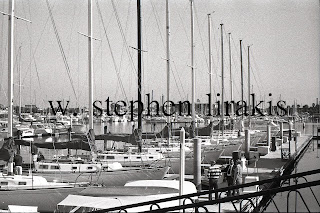 |
| congressional cup at long beach |
In April we went to Long Beach for the Congressional Cup, which in those days was really the only match racing event outside the America’s Cup. Ted Turner won. (I think that might be Dennis Connor on the dock in the photo at Long Beach Yacht Club.)
 |
| wsl on independence |
Back to Marblehead and more training and sail testing at the conclusion of the regatta. We had not faired well, not last, but not winners. The end of May was the date we would tow to Newport. We had a final “regatta” in Marblehead between “Courageous” and Independence” in which we were beaten handily by “Courageous” Reggie Pierce looked up from the grinder handles and said”This is going to be a long summer.” We all had a collective sense that we did not have the faster boat.
 |
| jibing duel courageous and independence |
Many of the photos including this last one, are thanks to Marshall Lawson who worked as shore support during the 1977 America’s Cup summer.
The next installment will deal with our arrival in Newport and the June trials.











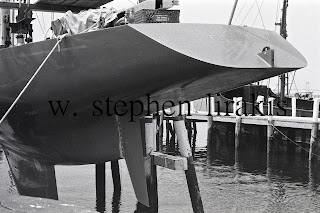
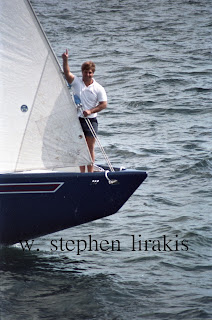
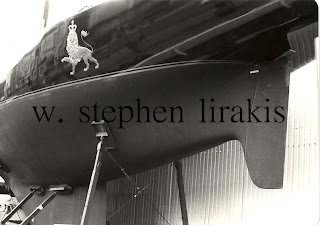

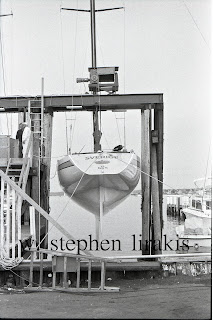




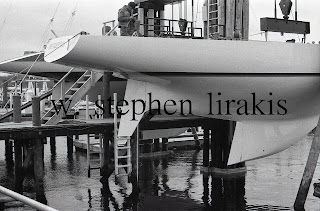
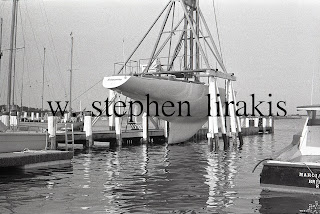

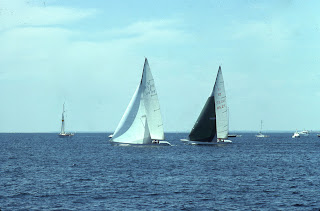

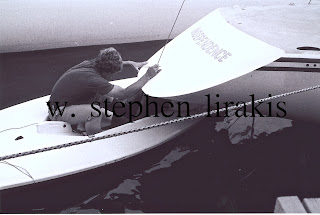











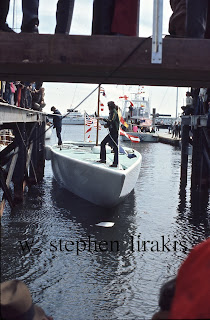




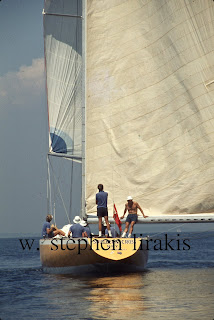
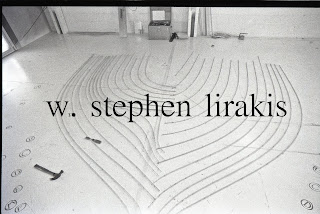.jpg)


